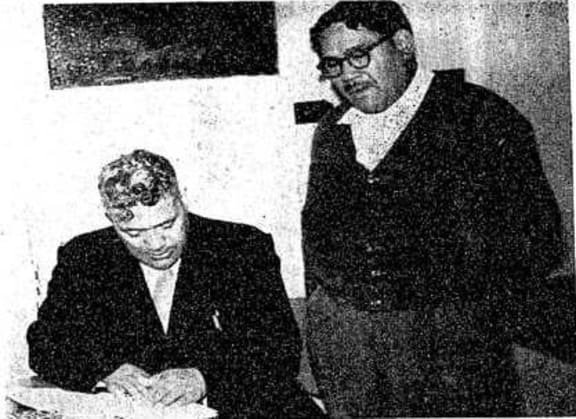-
Ngā Karere me Ngā Rauemi
News and Resources
Ngā Karere me Ngā Rauemi
News and Resources
-
Te Rangaihi Reo Māori
The Movement
Te Rangaihi Reo Māori
The Movement
-
Te Pae Kōrero
Our Community
Te Pae Kōrero
Our Community
-
Huihuinga
Events
Huihuinga
Events
-
Ngā Ara Ako
Learning Pathways
Ngā Ara Ako
Learning Pathways
-
SearchSearch
Search
Search

The Māori boarding schools like Te Aute, Hato Petera and St Joseph's College did teach te reo Māori, but in the state system, the options were very limited until the late 1960s, when te reo became a language subject for School Certificate.
"One way that did exist in a limited way early on was via the correspondence school which of course used to broadcast classes via radio," Sarah says.
This second recording is from one of those classes, led by teacher Hironi Wikiriwhi.
"They're great, some of those correspondence book school lessons, they're very much … of the era," Sarah says.
Transcript excerpt below. To listen to the recording, follow the link.
Hironi Wikiriwhi: "Morena ra, morena ra, good morning, Māori pupils.
"1956: it's our first Māori lesson for the year. 1956 in Māori - kotahi mano, e iwa rau, e rima tekau, mā ono.
"Kotahi mano - one thousand; e iwa rau - nine hundred; e rima tekau - fifty; mā ono - and six.
"It's quite simple, isn't it? Now, to all new members, it's your first lesson in pronunciation - but don't be dismayed, Māori is the easiest language to speak, it's purely phonetic.
"It begins with the alphabet. Notice there are 15 letters in the Māori alphabet - now, that's a good start - for, as you know, English has 26 letters - so we find that Māori is much simpler, it is only 15."
Te Whanganui-a-Tara | Wellington | Wellington City | 1950-59 | Story is by tangata whenua
















Comments